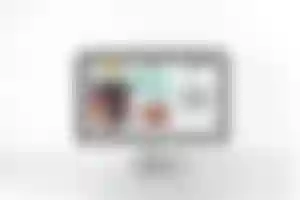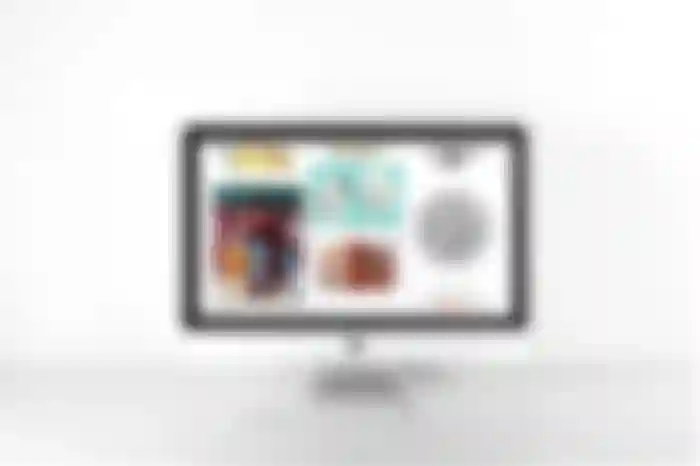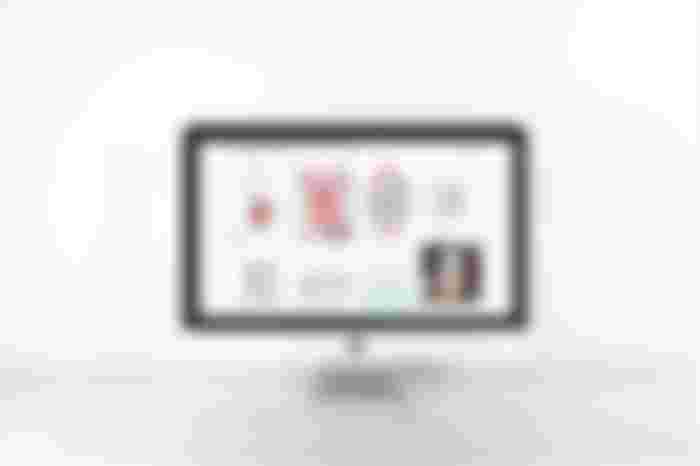Are you a freelance creator? Whatever your artistic discipline, you need to get your work out there. A personal website communicates your talents, presents the work you’re proud of, and connects you with those who may be interested in your expertise.
Here are some tips to help you put together a website of your own that will show off your talents, capture your personality, and communicate what makes your work special.
Define who you are as a creative
Whether you’re a photographer, web designer, music producer, writer, or some other type of creative, you want to be known for your talents.
This means taking inventory of all that you do, figuring out what you value and the type of work that excites you. Your identity as a creative needs to be as obvious to anyone landing on your personal website as it is to you.
When you think of people who’ve found success and fame in their respective creative fields, their personal brands are easy to recognize.
Think about Martha Stewart. Her website offers recipes, gardening tips, home decorating ideas, as well as other content that supports her product lines. Everything she touches is uniquely Martha, where sophistication and practicality come together in just the right balance.
With the name Martha Stewart comes high expectations for the quality of her products, as well as the refined design aesthetic which you see in her website.

marthastewart.com
What do you want to be known for? Your personal website gives you the space to tell the world what makes you distinct and to show off your own personal brand.
Develop your own brand
Let’s go a bit deeper and see how personal websites function both in marketing your talents as well as showcasing your unique brand.
Chipp Kidd is a design superstar. You’ve probably seen books that he designed the covers for—like the ever popular Jurassic Park. He’s both prolific in his artistic output and famous for his dandy style of dress. We see him peeking out of the right hand side of his own personal website, with a grid of book covers and other print projects to the left. We get a clear idea of his work as well as a taste of his eccentric personality.

chipkidd.com
When you're creating your your own personal website, approach the design process with a sense of awareness of who you are as a creator, and the type of work you do. Like Chipp Kidd, let people get to know who you are as well as showing them your creative work.
Be authentic
Don’t force a persona or misrepresent your skills. Most of us have the innate ability to sense when someone’s trying too hard to be something they’re not.
Your personal website is a celebration of who you are and what you love to do. It shouldn’t be watered down with sales speak, tired cliches, or industry buzzwords. Let honesty and integrity guide every piece of writing and the images of your work that make up your website's beautiful layout.
At the same time, keep in mind that you don’t have to be too humble. Don’t devalue your work, or diminish your creative capabilities. Let your true talents shine, making it obvious to everyone what you’re capable of.
Identify your expertise
It's common for creatives to have their hands in a wide variety of projects. But for a personal portfolio website to make a strong impression, it must convey what you do best.
With an eye for composition and color in documenting the pursuit of thrills within nature’s expanse, every photo on Chris Burkhard’s website displays his high level of photographic expertise. Not a single image feels out of place—every one has been carefully shot and selected. His talents are clear with every image in this stunning portfolio website.

chrisburkard.com
We see this same sense of clarity in Joanna's Newman's personal website below. As a designer, her talents lie in creating dynamic visuals like motion graphics and effects. At the top of Joanna's website, an animated reel of her motion design work is set to hip electronic dance music. If all we were to look at was this one clip, we would still get a solid idea of her creative niche.
When designing your own web page, your artistic proficiency should be apparent in all of the projects that you decide to include.
Determine your audience
What kind of people (and potential clients!) do you want to attract to your personal website?
Knowing who this demographic is will not only shape what content you feature on your website, but will also affect the look of the web design itself.
What type of companies would you like to work for: scrappy startups, or corporate giants? Do you enjoy pushing the conventions of creativity and breaking rules? Or are you someone who thrives more on no-nonsense practicality?
There’s an audience out there for your specific flavor of creativity, and your website needs to communicate what that is through its visuals and text.
Let the visual design reflect your personality
Once you know how you want others to see you, it'll be easier to craft a web design that communicates your personality as a creative.
Self-described “designy illustrator” Mikey Burton has a cartoon-inspired style that doesn’t take itself too seriously. We see this aesthetic across his website grid of featured projects. There’s a bouncy lightheartedness that touches everything he creates.


mikeyburton.com
This carefree feel is carried through all the way to Mikey's About page, which skips the standard headshot format, instead using one of his stylized illustrations to represent himself. Mikey has a distinct personality which is apparent in his work, and brands looking for a bit of quirk will find what they’re looking for in this website.
Keep it organized
Like any web design, your personal website needs to have clear navigation and a logical structure
Your website is an extension of who you are. If it’s complicated and confusing, no matter how great the work featured in it, potential clients may find it hard to get past the wonkiness.
And of course your featured projects, calls to action, and other content shouldn’t get lost in a design that’s too busy. Negative space, sizing, and color choices all make a huge impact in ensuring that these all important details stand out.
Prioritize current work
Your personal portfolio is a glimpse into who you are right now as a creative.
Sure, you probably have some decent projects you worked on years ago, but if they don't reflect what you’re doing now, you’ll likely want to leave them out of your personal website. Showcase work that offers a present-day snapshot of what you create.
Maybe you have a new skill or niche you'd like to explore more, and hopefully land new gigs in that area. Be sure to include work that shows this in your personal website. It’s not uncommon for UI/UX designers to feature re-imaginings of apps and websites, displaying how they would improve them; photographers to include non-paid jobs; and illustrators to include work they’ve done just for the fun of it.
If it’s something you’d like to do more and get paid for, include it among your featured work, even if you have to invent projects of your own.
Taking a look through Denys Nevozhai’s portfolio, we see a fantastic selection of paid work he’s done for his clients—but he’s not afraid to mix things up with a few passion projects. With illustrations celebrating his love of Shanghai, watch-face mockups, and this motorcycle speedometer here, these personal creative explorations show us a wider array of his capabilities. Denys has linked out to his pages on Dribbble and Behance, which is a smart way to shuttle visitors to see more of his work.
When assembling your own portfolio website, you don’t want to bog it down with outdated work. Keep it fresh, communicating who you are as a creative right now.
Be consistent
Your work is imprinted with a definable style. Make sure that anyone scanning through your projects can see your unique creative sensibilities. You can showcase a number of different types of projects, but anyone should be able to see a uniformity in what you create.
This portfolio website for Verena Michelitsch demonstrates the power of consistency.
With a resume filled with roles as both an artist and art director, working with companies like Apple, Condé Nast, and the Smithsonian, there's no lack of impressive work she's had her hand in. From label designs for CBD drops, brochures, print ads, and other visual media, Verena has worked on a wide range of projects. Scrolling through all of these we see the same artistic sensibilities, with quaint typography and a keen eye for color, every piece coming together in harmony revealing who she is as an artist.
Wendy MacNaughton, whose website is featured below, is an illustrator, graphic designer, and author. Scrolling through her work we can see a distinct style of loose hand-drawn lines. Looking through her portfolio, we see this distinct style across all of the projects she’s worked on.

wendymacnaughton.com
Your own personal website should have this same sense of cohesion, with each project showing a well-defined style.
Tell the story of your creative process
Having a few lines written about each project you’ve worked on is a good start. But for people to get greater insights into how you work, consider telling the story behind a project.
You might include preliminary steps you took, like practice shots, sketches, or other work you did beforehand. Talk about your success, but don’t be afraid to describe any missteps.
A bit of vulnerability can go a long way in making a more personal connection with anyone landing on your portfolio. It demonstrates how you face challenges, correct your course, and ultimately deliver an end product that meets your clients’ expectations.
Alison Park Douglas, an esteemed UX designer, makes storytelling a central part in discussing her work. We see the design stepping stones of Understand, Define, Design, Prototype, Test, and Results in each of the case studies on her website, where these are each discussed for a given project. This goes so much further than sparse text and bullet points, fully fleshing out her process.
On your personal portfolio, you need to go deeper than just a surface level grid of projects. Show people your skills and the thoughts that power them. Whether you’re a wedding photographer discussing your approach, a copywriter talking about the writing process, a comic book illustrator describing your craft, or any other freelance creator, give people a behind the scenes look at how you approach your work.
Include testimonials
Having voices in your portfolio besides your own gives additional proof of what you're capable of and what it’s like to work with you. Don’t be shy in reaching out to past clients, managers, and coworkers in getting positive comments that you can integrate into your web design.
Put together a website featuring your creativity
Whatever your realm as a freelance creator, a personal website serves an important role in getting more exposure for your work. It gives the opportunity to not only broadcast your talents, but to give people an idea about who you are. Anyone taking a quick scroll through it should be able to identify what makes you unique and the style of your work.
Wherever you’re at in your career, putting together a portfolio is vital in connecting with those who will appreciate your craft. To get started with your portfolio, you can check out some of the portfolio templates created by Webflow.





